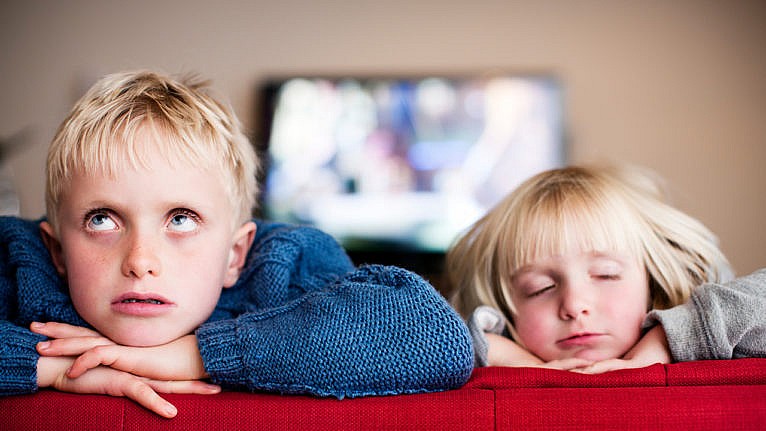As hard as the pandemic has been for your children, it’s probably been even harder for others. And yet, telling that to your kids won’t help them feel grateful.

Photo: iStock/RapidEye
This past December, mom-of-two Ramsey Hootman was busy planning a holiday activity for her seven-year-old’s Cub Scout den. Because of COVID-19, the group would forgo its traditional in-person carolling and toy drive. Instead, Hootman had arranged a project the children could complete from home: making cards for seniors at a local assisted living facility.
Unfortunately, the kids weren’t interested. “I had a really hard time getting any of the kids in our pack to participate,” Hootman says. She eventually persuaded her sons to make a few cards but felt disheartened by their lack of enthusiasm. Leading up to the project, Hootman had talked with her children about how lucky their family was to be together and how important it was to help others who weren’t able to see loved ones. Why didn’t her kids seem to be thankful?
In the midst of a global crisis, it’s understandable that we want our children to appreciate the good things in their lives. But experts say that asking children to show gratitude isn’t the same as cultivating it. Here’s how they recommend approaching the topic.
1. Ditch the expectations
When we want our kids to show gratitude and they don’t, reminding them why they should be thankful doesn’t help. Instead, “they sense the judgment or the pressure” fuelled by our preconceived ideas about how they should behave, says Emily Edlynn, a clinical psychologist in Illinois.
“It’s hard to preach gratitude,” says Laura Greenberg, a registered psychotherapist in private practice in Toronto. While parents should encourage kids to take part in different experiences—from volunteering to donating toys—we need to let go of any expectations that kids respond a certain way to these activities. Gratitude is a feeling that comes from the inside, Greenberg says, “so we can’t just tell someone to be thankful and that person becomes thankful.”
2. Make space for all emotions
Lindsay Holly, a licensed clinical psychologist and assistant professor in the Department of Psychology at Marquette University in Wisconsin, says embracing gratitude can be hard for kids “when what they’re experiencing is a lot of loss right now of things that they used to have,” like the ability to see friends and socialize freely outside their homes. But kids don’t have to choose between being sad and being thankful. “Both are real, both are important, and both are useful emotions to have and to talk about,” says Holly.
When our kids are upset, we tend to jump to “fix-it mode,” says Greenberg. But if we allow ourselves to be present in those tough feelings with our children, we’ll help them understand that all of their emotions are valid, even the uncomfortable ones. Over time, this practice enables kids to develop emotional self-efficacy—the ability to tolerate and cope with different feelings—and become more receptive to gratitude.
3. Model gratitude
Children are constantly observing us, says Edlynn. Rather than telling them how we’d like them to feel, we can be role models in expressing our own gratitude. That might mean sharing what brings us joy during the pandemic. For example, you might say to your kids, “Even though I’ve missed seeing a lot of people this year, I’m really grateful that I’m still able to meet up with a friend to walk our dogs.”
4. Recognize that kids’ perspective-taking skills are developing
Let’s say your kids complain that school is boring now because of pandemic restrictions. Your knee-jerk reaction might be to remind them that some kids haven’t been inside a classroom since early 2020, and that they should recognize how lucky they are in comparison.
This type of perspective-taking is an important skill, but it’s one that kids are still developing—and the younger the child, the more difficult it is to practice. Children learn mainly through experiences, so “talking about something in that abstract way doesn’t sink in like it does for us,” says Edlynn.
Along these lines, Hootman realizes why the card-making project didn’t resonate with her kids: They couldn’t see or otherwise interact with the people they were supposed to be helping.
We can encourage our kids to practice perspective-taking by asking them open-ended questions. You might say, “I was reading about so-and-so,” suggests Greenberg. “What do you think it would be like for that person?”
5. Remember gratitude isn’t a fix for negative feelings
For kids and adults alike, some amount of anxiety and depression is considered “normative” right now, says Holly. While being thankful can potentially help us feel better, gratitude interventions alone aren’t likely to alleviate anxiety and depression, according to a study from The Ohio State University. If children are experiencing intense symptoms, “then the recommendation would certainly be to seek out professional forms of therapy,” says Holly.
Gratitude is valuable in itself, but it’s not a cure for negative emotions—nor does it need to be. There’s power in embracing gratitude, says Greenberg, “but there’s also the power that comes from learning to accept the negative feelings that you have.”
FILED UNDER: gratitude service viral volunteering
Source link : https://www.todaysparent.com/family/parenting/teaching-kids-gratitude












